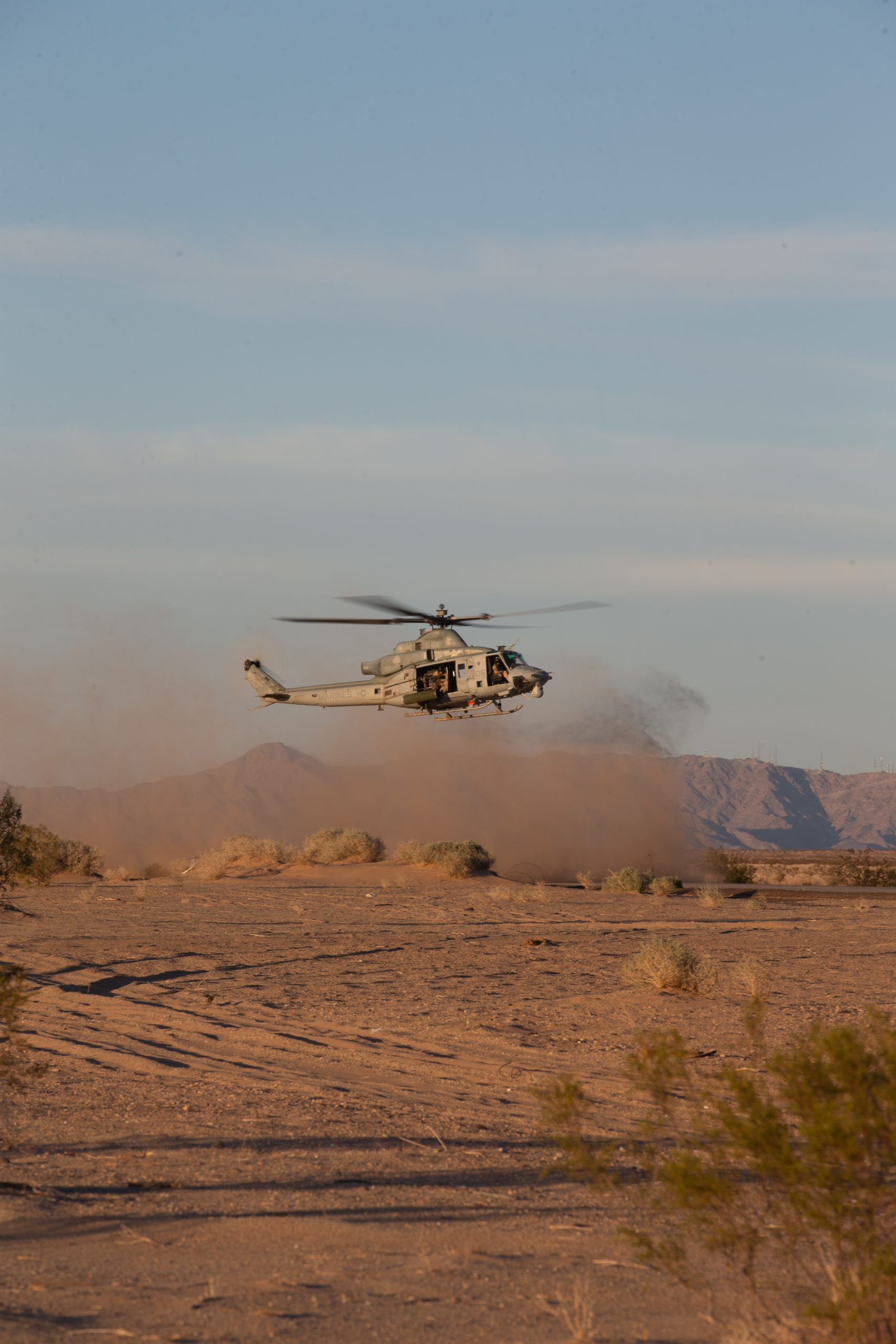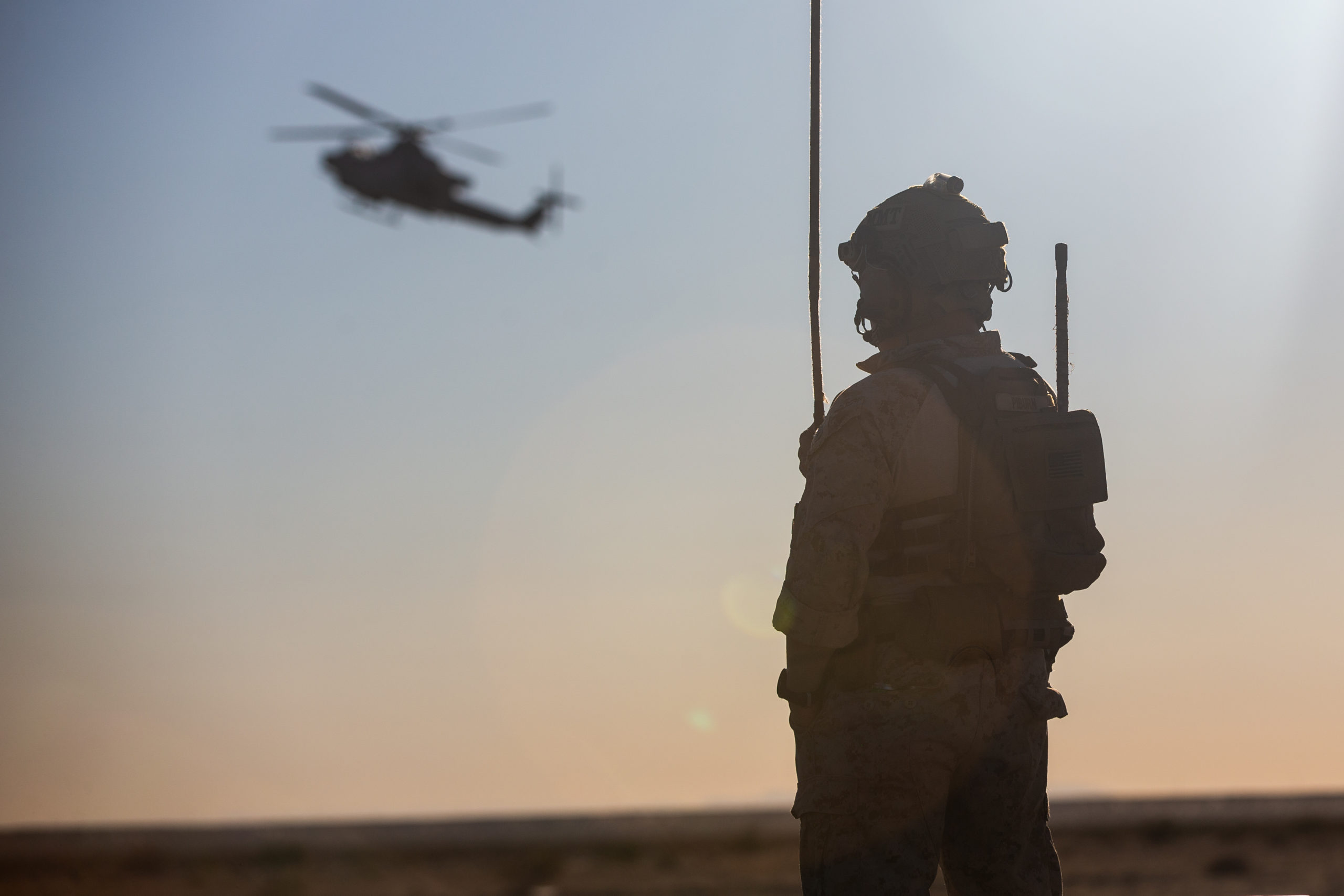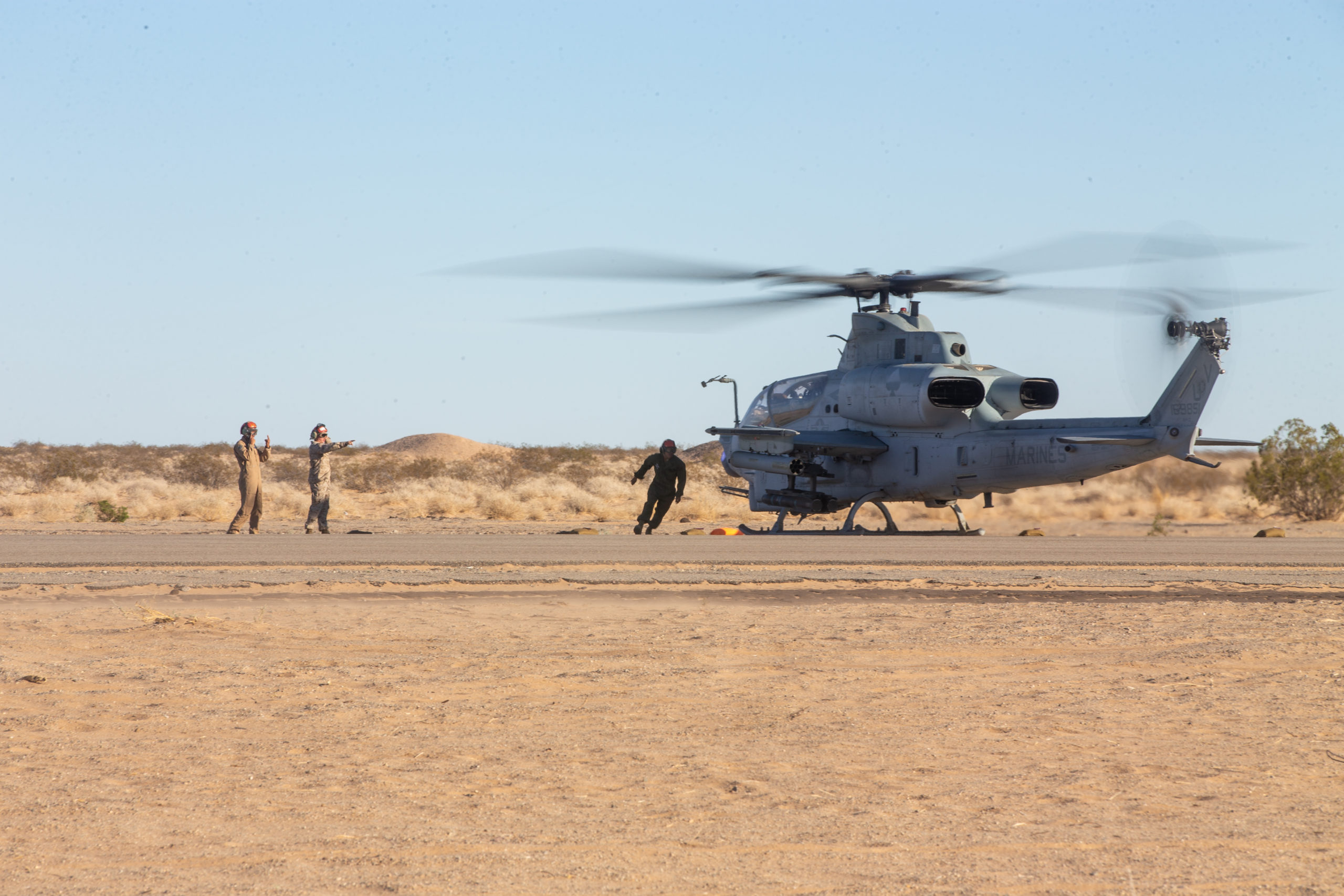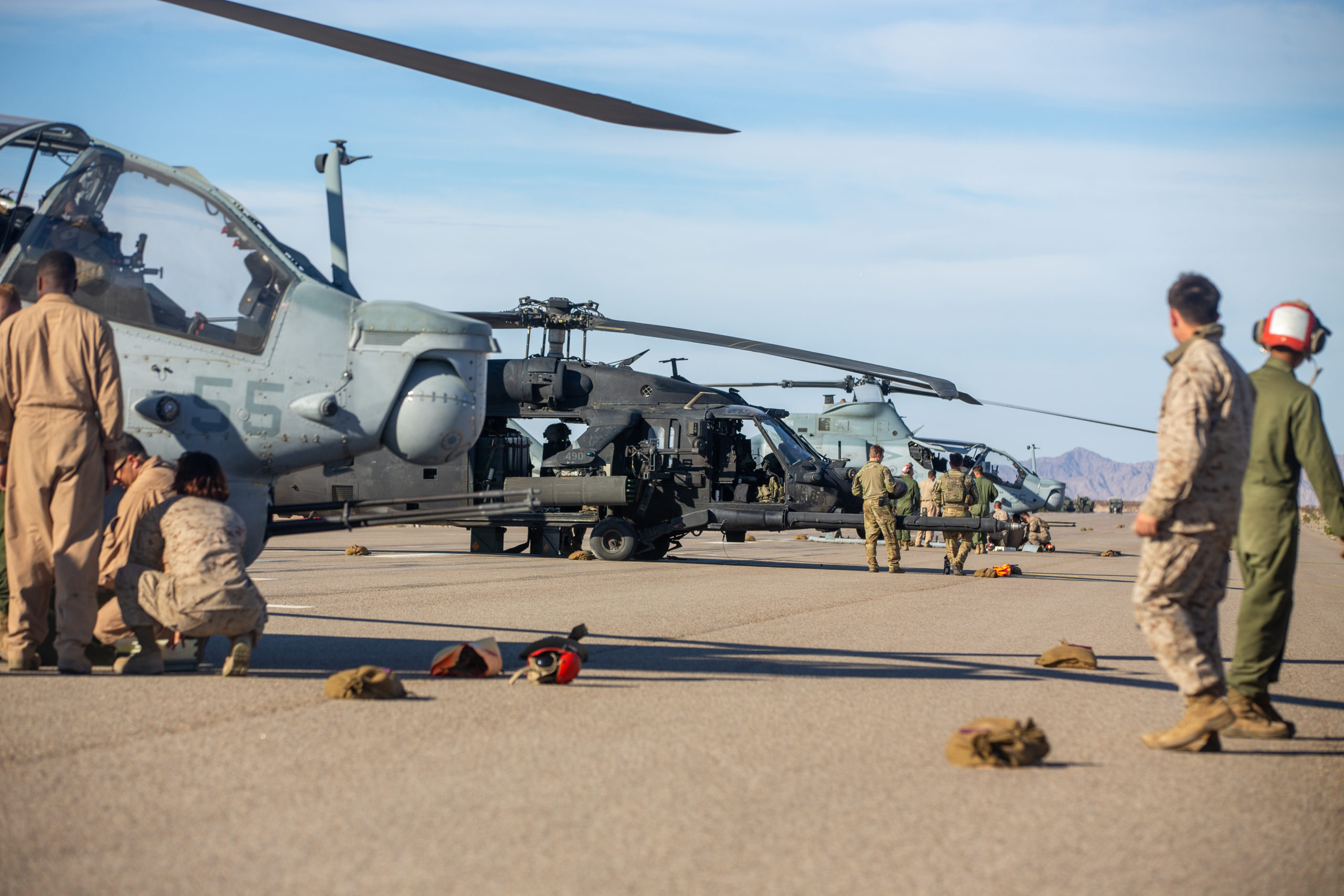By Robbin Laird
During my recent visit to MAWTS-1 in April 2022, I had a chance to talk with SSgt Kyle Coutts, a specialist on fuels and providing fuel to an expeditionary force. As the Marines focus on expanding and extending their capabilities to distribute their forces to operate from a variety of basing options, at sea and from land, the question of how to sustain such a distributed force obviously becomes a growing challenge and concern.
My discussion with SSgt Coutts highlighted how the fuel side of the USMC is working ways ahead to ensure that the core capabilities to deliver energy to the force can be effectively maintained in austere conditions.
During my last visit to MAWTS-1 in 2020, I spent a good deal of time talking with MARPs about mobile basing and forward armed refueling points. And in those discussions, the recognition of the challenge of dealing with peer competitors was highlighted in terms of the needs to distribute the force, and move with speed throughout the battlespace.
My discussion with Coutts highlighted some additional insight into how they were working this challenge. One way has been based on his training with the U.S. Army to be able to work with fuel worldwide and to ensure that fuel held by allied nations can be ensured to work within the specific USMC platforms.
A second way is to prepare for the coming of the CH-53K which can lift significant amounts of fuel and move those to distributed locations even before Marines have arrived at a proactive FARP from the standpoint of the emplacement of refueling points in advance of the force.
A third way was to look at new ways to use JPADS or Joint Precision Airdrop Systems to support forward movement of a distributed force as that force moves towards an objective area.
And this would then combine perspectives on how to shape various logistical fuel support alternatives ranging from seabase support to CH-53K support, to JPAD support.
Put in other terms, the Marines are looking at shaping a range of fuel support options for a distributed force working on mobile and expeditionary bases throughout an extended battlespace.
As the U.S. Navy works a new class of sea-basing ships, these ships can work as “mother ships” as well from which the Marines can fly fuel to austere locations. And the Pentagon has funded an autonomous sea barge to provide a sea-based FARP to support rotorcraft which could be part of the Navy-USMC future as well.
We discussed this development in terms of a focus on Resilient Expeditionary Agile Littoral Logistics or REALL. Here the effort is upon working through a variety of ways to leverage a range of shipping to deliver the kinds of “FARP” support that the Marines need when aviation is supporting basing in austere locations. One way to do so is to use commercial shipping containers but configured to handle USMC supplies and then be able to move those containers from the ship, in effect, as a mother logistics ship, to the area of interest.
In short, the Marines at MAWTS-1 are working innovative ways to support the USMC as a distributed but integrated force.
Editor’s Note: This July 20, 2020 article published by the U.S. Navy highlighted REALL technology.
Naval Facilities (NAVFAC) Engineering and Expeditionary Warfare Center (EXWC), U.S. Army Engineer Research and Development Center (ERDC), U.S. Central Command (CENTCOM), and the U.S. Transportation Command (TRANSCOM) successfully demonstrated a joint capability vertical take-off and landing (VTOL) technology to refuel from a forward-deployed barge as part of the Resilient Expeditionary Agile Littoral Logistics (REALL) Joint Capability Technology Demonstration (JCTD) at the Joint Expeditionary Base Little Creek – Fort Story on 13 July 2020. Funded by OSD Research & Engineering, the JCTD Program addresses Combatant Command (CCMD) and Joint warfighting gaps through prototyping and demonstration of innovative and game-changing technologies.
The REALL JCTD Team completed its first successful technical demonstration, with NAVFAC EXWC at the helm as the demonstration technical lead; USCENTCOM, USTRANSOM and USMC War Fighting Lab (MCWL) serving as the operational leads providing operational and development inputs.
The VTOL demonstration determined whether a VTOL aircraft can land and refuel from a forward-deployed barge. The demonstration also determined if REALL could provide a low-cost logistics solution for the Department of Defense (DOD), as an alternative to placing high-value logistics supply platforms in contested environments. This successful demonstration marks the first of numerous planned technology and operational demonstrations aimed at eventually arriving at an end state where a military utility determination can be established, with the goal of transitioning REALL capability technology sets to the warfighter
“This demonstration is another example of what the great people of NAVFAC EXWC provides for our American warfighters,” said Mr. Kail Macias, NAVFAC EXWC Technical Director. “Speed and agility enable our forces to win the fight. The success of REALL is a tribute to the hard work and collaboration across DOD.”
The VTOL demonstration consisted of one MH-60M Blackhawk helicopter—provided by the U.S. Special Operations Aviation Command, Systems Integration Management Office—which landed on the Improved Navy Lighterage System (INLS). The INLS is designed to simulate a refueling evolution; INLS systems were provided by Amphibious Construction Battalion Two.
The INLS Roll-on/Roll-off Discharge Facility (RRDF) is a modular system and is traditionally designed to facilitate movement of rolling stock from ship to shore platforms,” said Lt. Cmdr. Robert Leftwich, Bravo Company Commander, Amphibious Construction Battalion 2. “It is a robust and highly capable platform suitable for other uses. Incorporating this legacy system into emergent needs enables more resiliency and responsiveness.”
“As the lead Combatant Command sponsor and warfighter representative for the REALL project, USCENTCOM’s goal was to demonstrate a littoral logistics sustainment capability for fuel distribution and logistics nodes in support of emerging operational concepts,” said Thomas Smith, CENTCOM J8-ST Chief Science Advisor for Advanced Concepts.” He added, “This Technical Demonstration was a success and advances the National Defense Strategy’s modernization priority on forward force maneuver and posture resilience.”
Looking onward, REALL will be further vetted, with the end goal of providing fuel, water, food and other supplies to vertical take-off and landing aircraft and seaborne vessels for logistics operations required by the Naval Concept of Expeditionary Base Operations.
Featured Photo: A SH-60 helicopter approaches a Roll-On Roll-Off Discharge Facility platform during a vertical take-off and landing (VTOL) demonstration at Joint Expeditionary Base Little Creek, VA. on July 13, 2020. The VTOL was part of a multi-service logistics exercise, surveying new methods of amphibious warfare operations.
JOINT EXPEDITIONARY BASE LITTLE CREEK, VA
07.13.2020
Naval Facilities Engineering and Expeditionary Warfare Center







